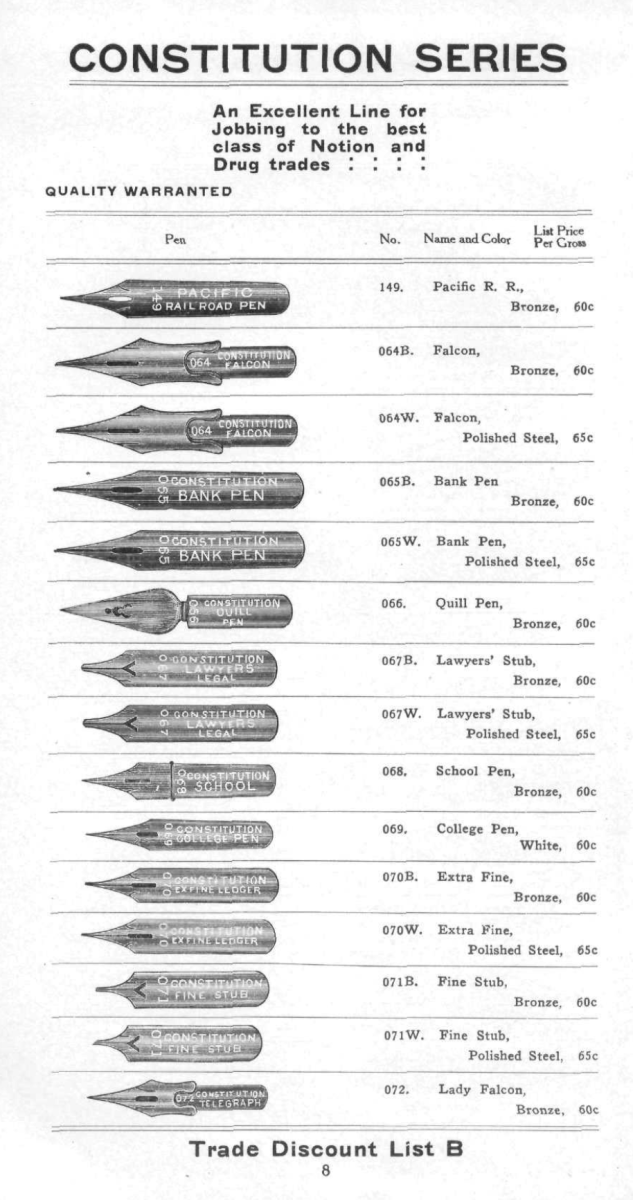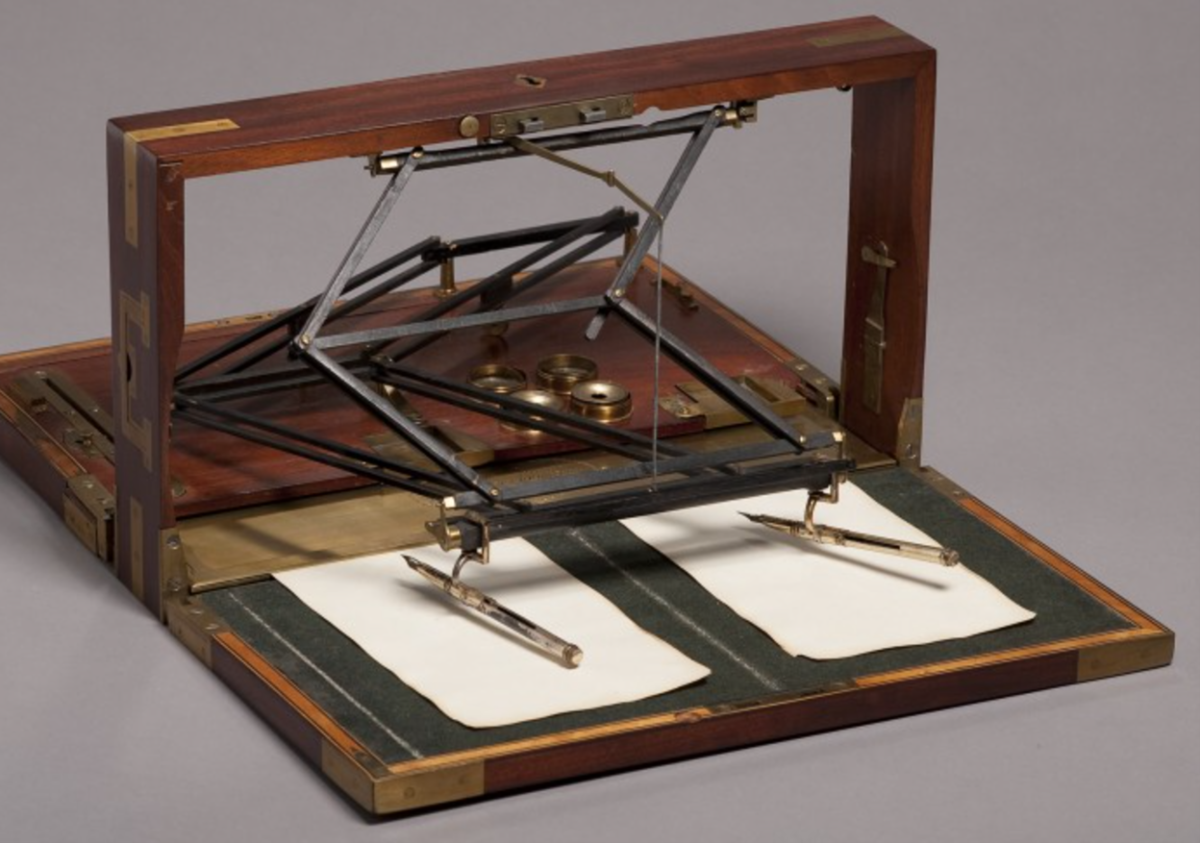Throughout his life, Thomas Jefferson continually sought the best and latest equipment for record keeping. This included a fountain pen, at a time when this was a new writing technology. For this pen, he paid $5 (equal to $140 today). This is referenced by Silvio Bendini in the book Thomas Jefferson and His Copying Machines. Below is an excerpt of Jefferson’s letter to Col. Peyton.
“I saw yesterday in the hands of Mr. Dyer a fountain pen, one of the best I ever saw. He said it was made for him by Mr. Cowan [Cowen], a watchmaker of Richmond, and cost him 5 dollars. The outer tube was of silver, but the two leaves of the pen were gold, and no other metal will resist the corrosion of the ink.”
It would be about 25 more years before technological innovations in ink and materials brought patented fountain pen designs to the commoner. This purchase occurred only a couple of years prior to his death on July 4, 1826, therefore, most of his voluminous writings were produced with quills and other duplicating instruments.

Jefferson’s desire to retain a copy of each of his letters began with his observation of archives and personal documents lost to fire and poor storage. It led him to seek out the latest device of the year or season. This all began with his purchase of a copying press, first used by T.J. on June 3, 1785. He had ordered it from England stationer James Woodmason two full years prior, around the time of his Congressional election.
The letter copying press involved wetting a sheet of transparent paper and placing it in contact with the newly inked letter, sandwiched under pressure. The copy was done on transparent paper because it had to be read from the side opposite the transferred ink (otherwise it was a reverse image). This required specially formulated inks and papers for successful transfer. Often these materials did not age well. As invention progressed, Jefferson ordered special polygraph writing machines made using a pantograph attached to a platform and held two pens. The second pen moved in unison with the one manipulated by the writer, simultaneously creating a perfect copy.

It is impossible to calculate how much capital Jefferson used on his writing equipment, ink, & paper. The $140 for a pen would seem like a lot to most people today, even if it was made from noble metals. The letter copying presses and pantographs were utilitarian and certainly seemed necessities to Jefferson but were bespoke items from England. Although we cannot determine what was spent in today’s dollars it is clear the purchases were enabled through other privileges. He had the connections in society and accounts overseas to disperse funds. Being a statesman and president afforded certain privileges. All classes did not have the means or wherewithal to document and preserve their history, beyond oral storytelling. This must be remembered when we consider whose history has been preserved, written about, and taught.
Laura Wahl is the Library Conservator at Hagley Museum and Library.
